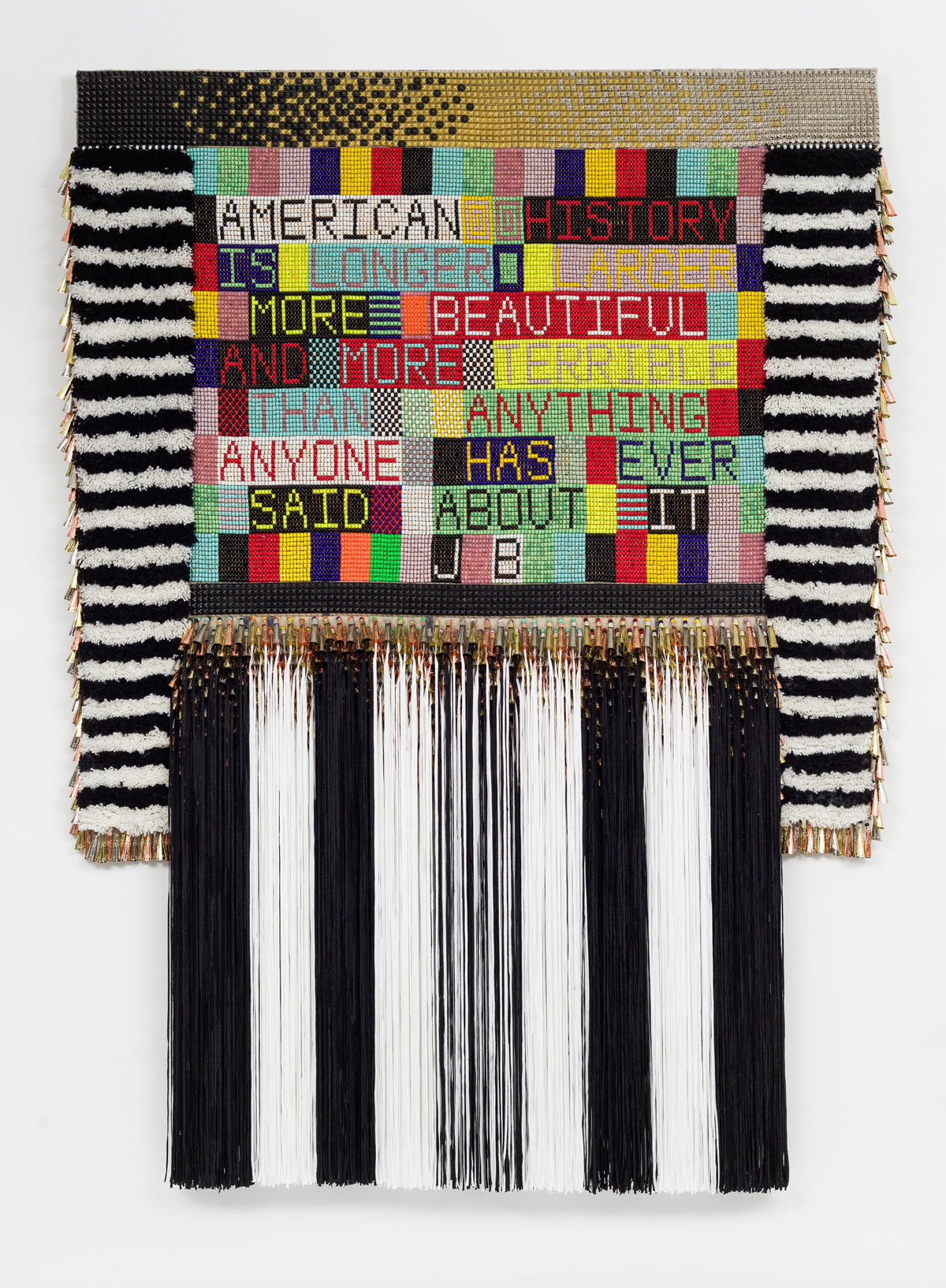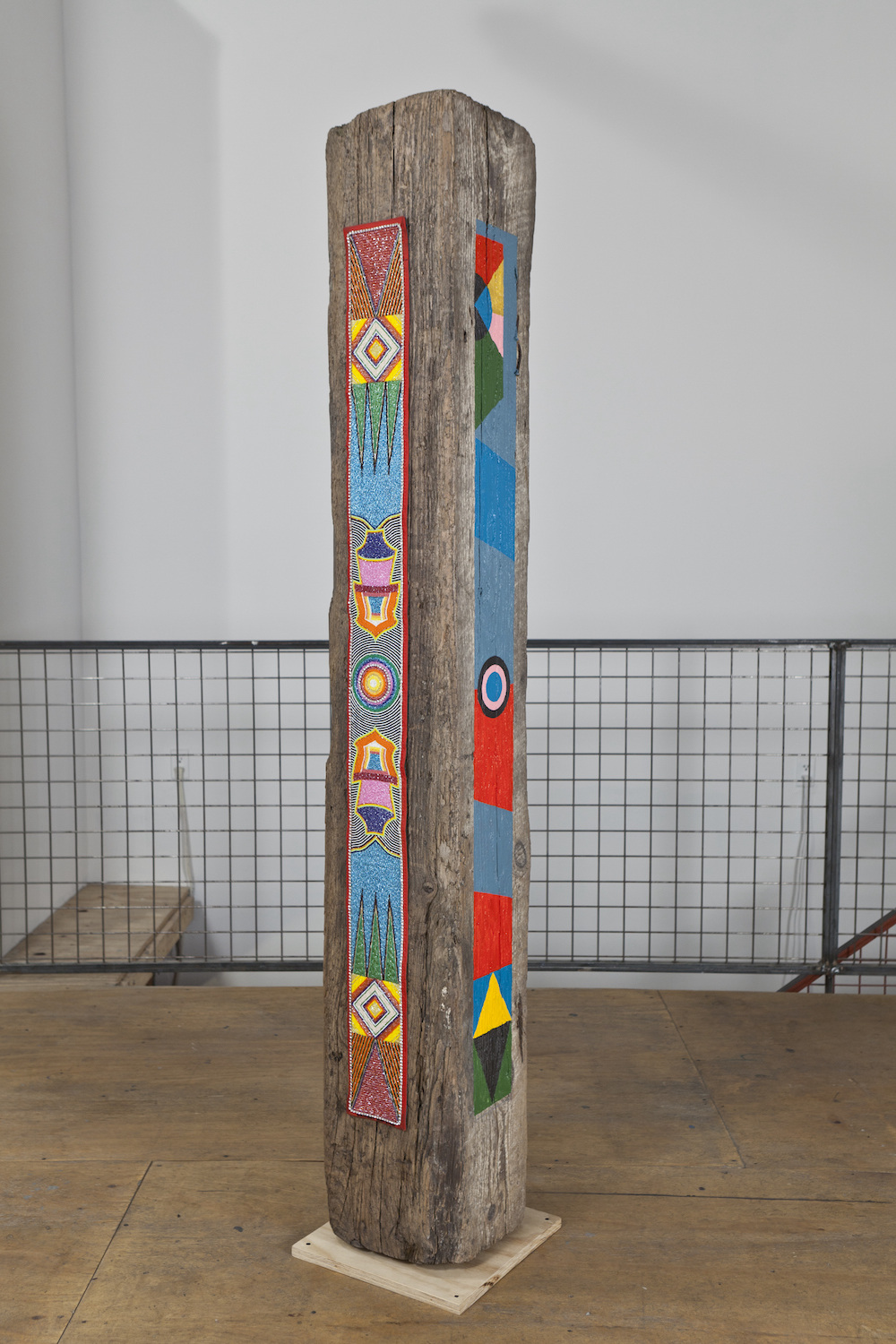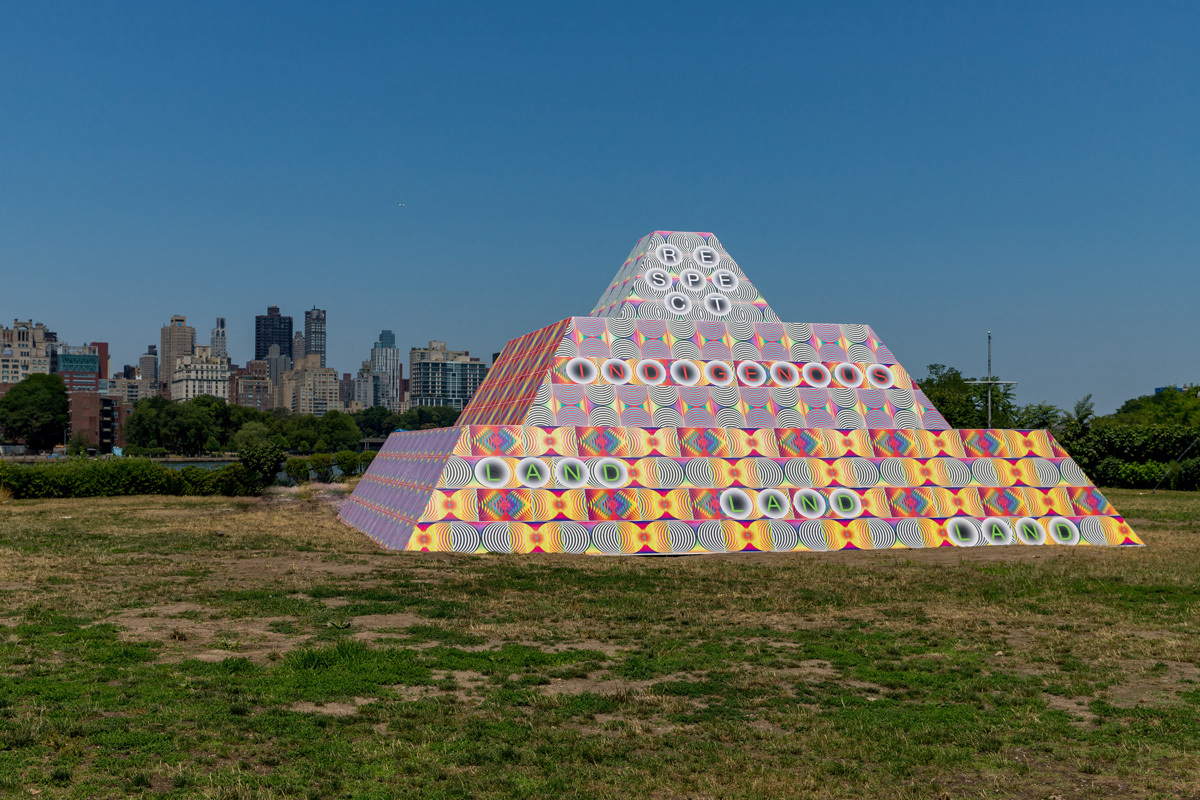
It’s almost time for the art-world Olympics, as the Venice Biennale is often described. But at the global art festival, which opens to the public on April 20, there are no winners or losers—instead, the event is an opportunity for artists to level up at a venue reserved for the best and the brightest from around the world.
In a historic first, artist Jeffrey Gibson, a member of the Mississippi Band of Choctaw Indians and of Cherokee descent, will represent the United States this year. No Indigenous artist has had a solo presentation at its pavilion before. Commissioned by the Portland Art Museum in Oregon in collaboration with SITE Santa Fe in New Mexico, Gibson is working with curators Abigail Winograd and Kathleen Ash-Milby to organize an exhibition that brings together an oeuvre so far-reaching it defies easy categorization.

Even though Gibson, who is based in Hudson, New York, is best known for his beaded punching bags, he doesn’t favor any one medium over another. He is far more committed to applying craft-inspired techniques, like beading and weaving, across them. His text-based works often incorporate song lyrics, to not only pieces like those bags, but also garments and wall hangings.
The most recognizable and consistent characteristic of his work is his keen eye for geometry. Gibson often calls the simple triangle one of his aesthetic starting points. He’s even printed the geometric pattern onto wallpaper, enveloping audiences in a sea of shape and color. For a recent performance, he hired a color guard team to dance with flags emblazoned with his signature designs.

Looking at Gibson’s work today, it might be hard to believe that he's said he sees the world as a painter. When Ash-Milby met him decades ago, the artist might have been best described as an abstract painter with a deep interest in gestural mark-making. While no one would say the same nowadays, his early pieces reveal glimpses of the expert use of color that has since become synonymous with his work.
In the end, fully understanding Gibson’s practice today requires looking back at his 2012 show at Participant gallery in New York. He was nearly 40 and on the brink of throwing in the towel on his career when he presented material unlike anything he had produced. He manipulated pieces he’d commissioned from various Indigenous artisans, establishing a dialogue with Native artistry that was otherwise missing from mainstream art circles.

Gibson painted geometric shapes in vivid colors on elk hide drums and wool blankets. He incorporated beadwork onto a wooden column. In the past, Gibson had worried about how audiences would stereotype Indigenous techniques; the show is emblematic of the moment when he chose not to shy away from putting them on display. Since then, he’s reached a point where he has been able to “build a foundation for people to consider my work within,” he has said.
And he did it by—and for—himself.
Now, he will show the fruits of that labor on the most prominent international stage for contemporary art.
While the details of his presentation at the Venice Biennale have been kept tightly under wraps, we know that Gibson will exhibit a series of sculptures, paintings, and multimedia pieces, along with a site-specific installation in the pavilion’s courtyard. The title of his show references Oglala Lakota poet Layli Long Soldier’s poem Ȟe Sápa.

Much Indigenous art is woefully missing from the history books, but Gibson’s won’t be. The Denver Art Museum published a hefty monograph of his work in conjunction with his 2018 exhibition at the institution—with work dating from 2011, that breakthrough moment in his career when he was gearing up for his show at Participant.
Beyond that, Gibson has conceived and edited a book called An Indigenous Present, which surveys the work of creatives ranging from contemporary Indigenous artists, photographers, musicians, and writers, essentially ensuring, in some small way, that future makers don’t have to work as hard as he did to bring to the forefront the rich and powerful histories underpinning their work.










 in your life?
in your life?

